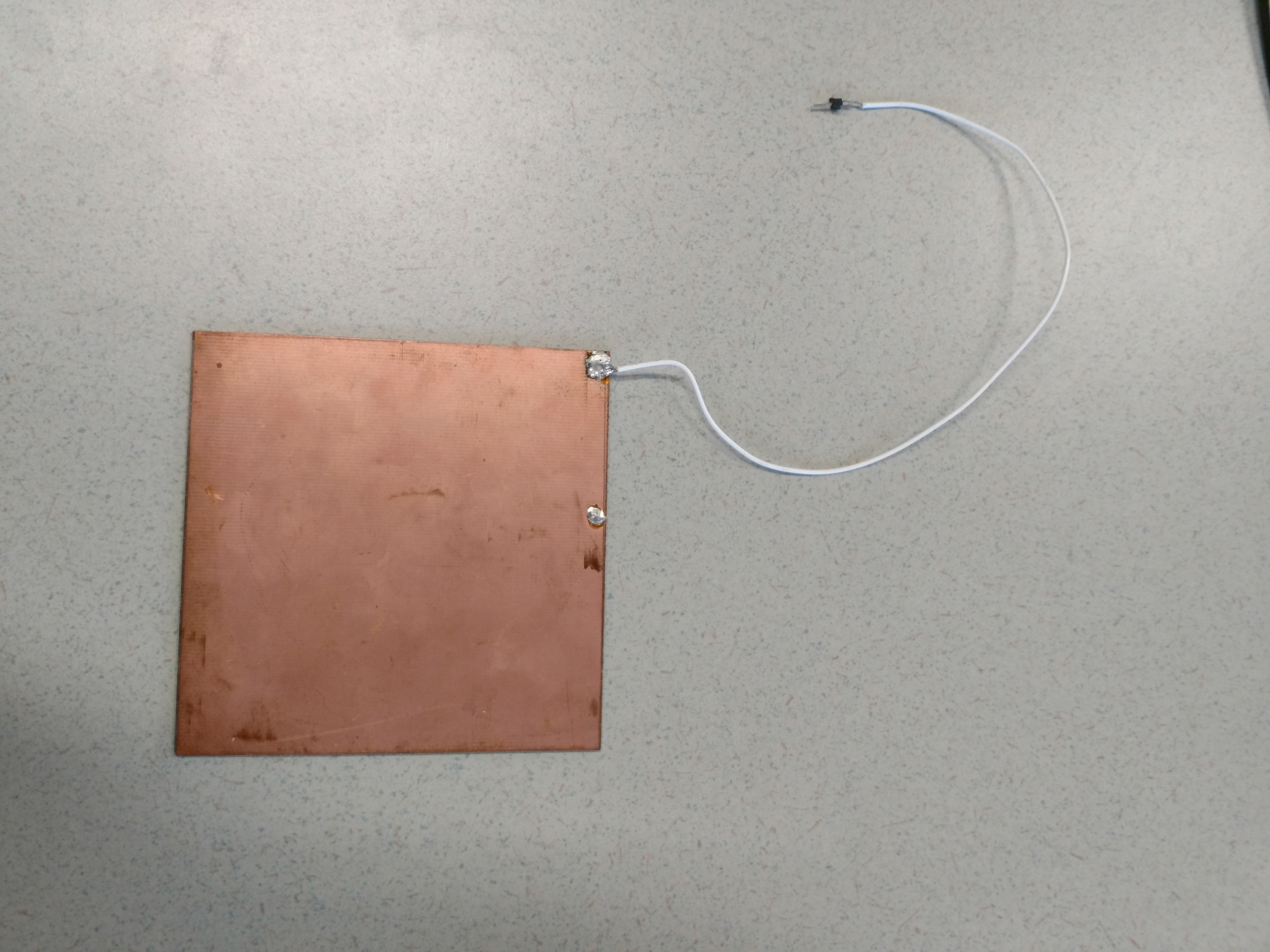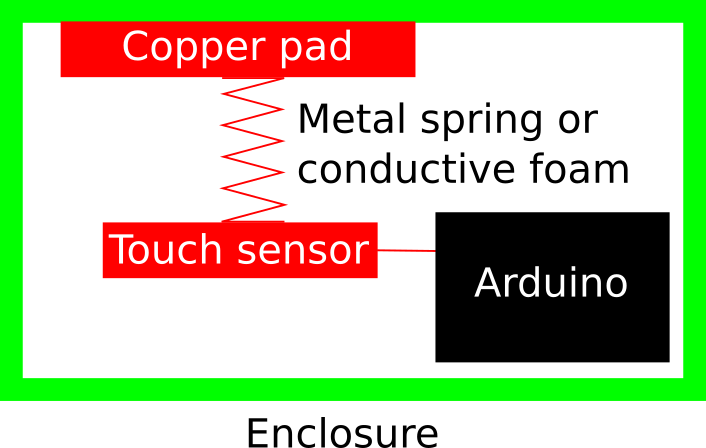Making a capacitive sensor
Basic capacitive sensor
A basic capacitive touch sensor is shown below. This is a large sensor meant to
be touched with your whole hand or used as distance sensor. It is made out of a
10 x 10 cm circuit board with copper on both sides.

Note that this sensor has no insulation and touching it directly can confuse TouchLib and might even damage your electronics (read the theory if you want to know why). To use this sensor in an actual application, always use some non-conductive material on top and bottom to prevent people from directly touching the sensor. If you make the sensor out of conductive textile, cotton or nylon based fabrics are usually good insulators. Be aware though that sweat and moisture might still penetrate these materials and thus can still cause the user to directly touch the sensor. If that is a possibility, consider using a water proof fabric.
The stackup for a basic sensor is shown in the figure below.

Note that this figure is not to scale. For real world sensors, you want the conductive material that forms the actual sensor to be as close to the surface as possible. Hence, the insulating material is usually only a few mm thick.
The conductive material for the sensor does not have to be thick; capacitive sensors use only very little current so losses due to a relatively high resistance (up to a few 100 Ohm) are usually not an issue. This also means that you usually can make the sensors out of carbon based material or material that has a conductive coating.
Cover material
In many projects, the capacitive sensor will be in a casing. This casing should not be made of metal as that can shield off the electrical field from the sensor to the users hand and thus prevent the capacitive touch to work properly. For the same reason, it is not recommended to use paint with a lot of conductive particles (such as metal or carbon). Some paints with metallic particles seem to work fine though; you’ll have to test which paints work well and which don’t. Also, be aware that some black paints contain large amounts of carbon and might affect the capacitive touch sensing.
As said before, the material should not be made of metal. Most other materials such as wood, plastic and glass as well as textiles (cotton, nylon, wool) are fine though. Note however that if the cover material is thick, the type of material can have an influence on the sensitivity of the sensor, since different materials conduct the electric field in a different way.
The degree to which the electric field is conducted is called the permittivity (symbol ) and expressed in F/m (farad per meter). Usually, it is expressed as a number relative to the permittivity of vacuum. The permittivity of vacuum (symbol ) is approximately F/m. The relative permittivity (symbol ) is then a unitless number that you have to mulitply with to get the absolute permittivity of a material.
For capacitive sensing, usually a higher permittivity results in a better capacitive sensing, and thus with a material with a higher permittivity you can use a thicker cover material.
A small overview of some different materials is shown below.
| Material | Relative permittivity ( ) |
|---|---|
| Air | 1 |
| Teflon | 2.1 |
| Paper | 3.85 |
| Mica | 3 - 6 |
| Concrete | 4.5 |
| Rubber | 7 |
| Glass | 3 - 10 |
| Water | 80 |
Bridging an air gap in an enclosure
If you need to cover a larger distance (for example, if you need to cover a gap
of a few cm when your pcb is on the bottom of an enclosure and you want the
buttons to be on top), you can leave out the insulation and instead stick the
touch pad to the inside of the enclosure and use a metal spring or conductive
foam to make a connection between the touch pad on the top of the enclosure and
the sensor on the pcb.

The sensor inside the enclosure does not have to be the same size or shape as the copper pad; it only needs to be large enough to make a proper connection with the metal spring.
Shields and guards
- for the sensor itself
- for the wire
Note also that the wire that connects the sensor to the Arduino has insulation on both sides as we don’t want the user to be able to directly touch this wire.